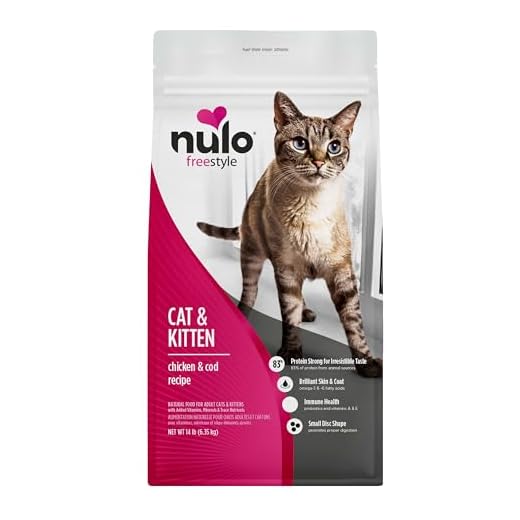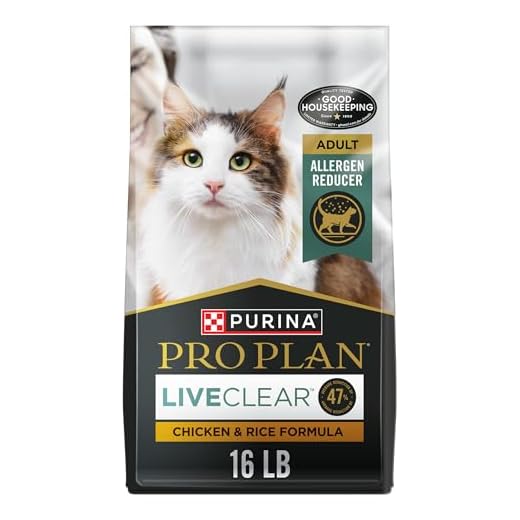



Regular fur loss is a natural process, yet there are times when it may seem excessive. As an 8-year-old Scottish Fold, I understand the concerns of my fellow felines and their humans about this issue. Typically, periods of increased hair loss can occur during seasonal changes, particularly in spring and fall. During these times, it’s common to notice more fur around the house, as we prepare for temperature shifts.
Diet plays a crucial role in maintaining a healthy coat. A well-balanced diet rich in omega fatty acids can promote healthy fur and skin. If there’s a significant increase in fur around your home, consider evaluating the nutrition. Sometimes, a simple adjustment in food can make a world of difference.
It’s also essential to monitor for any signs of skin irritation or excessive itching. If it seems like a lot of fur is coming out along with these symptoms, a visit to the vet may be necessary. There could be underlying issues such as allergies or parasites that need to be addressed. Regular grooming can help manage fur loss and keep the coat looking its best.
Understanding the Shedding Cycle in Cats
During seasonal transitions, I notice that my fur really starts to come off. This is a natural response to changes in temperature and daylight. Spring and fall are the peak times for my coat to thin out or grow thicker, aligning with the warmer and cooler months. It’s fascinating how evolution has fine-tuned this process!
My humans can help manage this by brushing me regularly, especially during these times. A good grooming session not only keeps my fur looking its best but also reduces the amount of hair around the house. Using a brush designed for my type of fur is key; it helps remove loose hair without irritating my skin.
Hydration also plays a role. When I’m properly hydrated, my skin remains healthier, which contributes to a smoother shedding process. My humans should always make sure I have access to fresh water, as it helps with overall coat health.
Stress can cause excessive hair loss too. Changes in the environment, loud noises, or new pets can lead to anxiety. My humans should create a calm space where I feel secure, which can help mitigate unnecessary fur loss.
Regular vet check-ups are important to rule out any underlying health issues that might affect my coat. Conditions like allergies or skin infections can lead to more significant fur loss than the usual seasonal change. Keeping an eye on my overall health ensures my shedding remains within a natural range.
When Shedding Becomes a Concern: Signs of Potential Issues
If I notice significant changes in my fur loss routine, I pay close attention to a few key indicators that may signal underlying issues. First, excessive hair loss accompanied by skin irritation or redness could indicate allergies or skin infections. Regular grooming helps identify these problems early.
Changes in Behavior
Another red flag is if I become more withdrawn or irritable than usual. Stress, anxiety, or discomfort can lead to an increase in fur loss. If my humans see me hiding more often or acting differently, it’s time to consult a vet.
Other Symptoms to Watch For
If I start experiencing weight changes or changes in appetite, that could hint at health concerns. Fluctuations in my weight, combined with unusual shedding, warrant a visit to the doctor. It’s also wise to keep an eye on my energy levels; lethargy along with fur loss suggests it’s time for a check-up.
If you’re unsure, checking out how much is a health certificate for a cat can provide more insight into what’s necessary for keeping me healthy.
Regular fur loss is a natural process, yet there are times when it may seem excessive. As an 8-year-old Scottish Fold, I understand the concerns of my fellow felines and their humans about this issue. Typically, periods of increased hair loss can occur during seasonal changes, particularly in spring and fall. During these times, it’s common to notice more fur around the house, as we prepare for temperature shifts.
Diet plays a crucial role in maintaining a healthy coat. A well-balanced diet rich in omega fatty acids can promote healthy fur and skin. If there’s a significant increase in fur around your home, consider evaluating the nutrition. Sometimes, a simple adjustment in food can make a world of difference.
It’s also essential to monitor for any signs of skin irritation or excessive itching. If it seems like a lot of fur is coming out along with these symptoms, a visit to the vet may be necessary. There could be underlying issues such as allergies or parasites that need to be addressed. Regular grooming can help manage fur loss and keep the coat looking its best.
Understanding the Shedding Cycle in Cats
During seasonal transitions, I notice that my fur really starts to come off. This is a natural response to changes in temperature and daylight. Spring and fall are the peak times for my coat to thin out or grow thicker, aligning with the warmer and cooler months. It’s fascinating how evolution has fine-tuned this process!
My humans can help manage this by brushing me regularly, especially during these times. A good grooming session not only keeps my fur looking its best but also reduces the amount of hair around the house. Using a brush designed for my type of fur is key; it helps remove loose hair without irritating my skin.
Hydration also plays a role. When I’m properly hydrated, my skin remains healthier, which contributes to a smoother shedding process. My humans should always make sure I have access to fresh water, as it helps with overall coat health.
Stress can cause excessive hair loss too. Changes in the environment, loud noises, or new pets can lead to anxiety. My humans should create a calm space where I feel secure, which can help mitigate unnecessary fur loss.
Regular vet check-ups are important to rule out any underlying health issues that might affect my coat. Conditions like allergies or skin infections can lead to more significant fur loss than the usual seasonal change. Keeping an eye on my overall health ensures my shedding remains within a natural range.
When Shedding Becomes a Concern: Signs of Potential Issues
If I notice significant changes in my fur loss routine, I pay close attention to a few key indicators that may signal underlying issues. First, excessive hair loss accompanied by skin irritation or redness could indicate allergies or skin infections. Regular grooming helps identify these problems early.
Changes in Behavior
Another red flag is if I become more withdrawn or irritable than usual. Stress, anxiety, or discomfort can lead to an increase in fur loss. If my humans see me hiding more often or acting differently, it’s time to consult a vet.
Other Symptoms to Watch For
If I start experiencing weight changes or changes in appetite, that could hint at health concerns. Fluctuations in my weight, combined with unusual shedding, warrant a visit to the doctor. It’s also wise to keep an eye on my energy levels; lethargy along with fur loss suggests it’s time for a check-up.
If you’re unsure, checking out how much is a health certificate for a cat can provide more insight into what’s necessary for keeping me healthy.
Regular fur loss is a natural process, yet there are times when it may seem excessive. As an 8-year-old Scottish Fold, I understand the concerns of my fellow felines and their humans about this issue. Typically, periods of increased hair loss can occur during seasonal changes, particularly in spring and fall. During these times, it’s common to notice more fur around the house, as we prepare for temperature shifts.
Diet plays a crucial role in maintaining a healthy coat. A well-balanced diet rich in omega fatty acids can promote healthy fur and skin. If there’s a significant increase in fur around your home, consider evaluating the nutrition. Sometimes, a simple adjustment in food can make a world of difference.
It’s also essential to monitor for any signs of skin irritation or excessive itching. If it seems like a lot of fur is coming out along with these symptoms, a visit to the vet may be necessary. There could be underlying issues such as allergies or parasites that need to be addressed. Regular grooming can help manage fur loss and keep the coat looking its best.
Understanding the Shedding Cycle in Cats
During seasonal transitions, I notice that my fur really starts to come off. This is a natural response to changes in temperature and daylight. Spring and fall are the peak times for my coat to thin out or grow thicker, aligning with the warmer and cooler months. It’s fascinating how evolution has fine-tuned this process!
My humans can help manage this by brushing me regularly, especially during these times. A good grooming session not only keeps my fur looking its best but also reduces the amount of hair around the house. Using a brush designed for my type of fur is key; it helps remove loose hair without irritating my skin.
Hydration also plays a role. When I’m properly hydrated, my skin remains healthier, which contributes to a smoother shedding process. My humans should always make sure I have access to fresh water, as it helps with overall coat health.
Stress can cause excessive hair loss too. Changes in the environment, loud noises, or new pets can lead to anxiety. My humans should create a calm space where I feel secure, which can help mitigate unnecessary fur loss.
Regular vet check-ups are important to rule out any underlying health issues that might affect my coat. Conditions like allergies or skin infections can lead to more significant fur loss than the usual seasonal change. Keeping an eye on my overall health ensures my shedding remains within a natural range.
When Shedding Becomes a Concern: Signs of Potential Issues
If I notice significant changes in my fur loss routine, I pay close attention to a few key indicators that may signal underlying issues. First, excessive hair loss accompanied by skin irritation or redness could indicate allergies or skin infections. Regular grooming helps identify these problems early.
Changes in Behavior
Another red flag is if I become more withdrawn or irritable than usual. Stress, anxiety, or discomfort can lead to an increase in fur loss. If my humans see me hiding more often or acting differently, it’s time to consult a vet.
Other Symptoms to Watch For
If I start experiencing weight changes or changes in appetite, that could hint at health concerns. Fluctuations in my weight, combined with unusual shedding, warrant a visit to the doctor. It’s also wise to keep an eye on my energy levels; lethargy along with fur loss suggests it’s time for a check-up.
If you’re unsure, checking out how much is a health certificate for a cat can provide more insight into what’s necessary for keeping me healthy.









